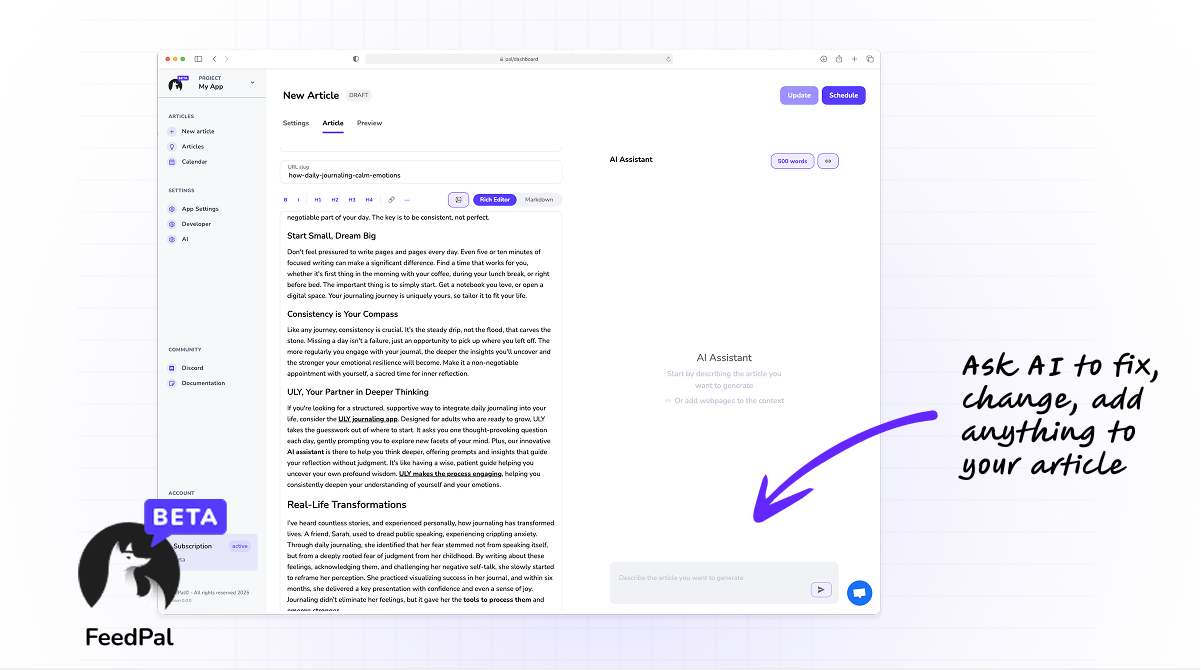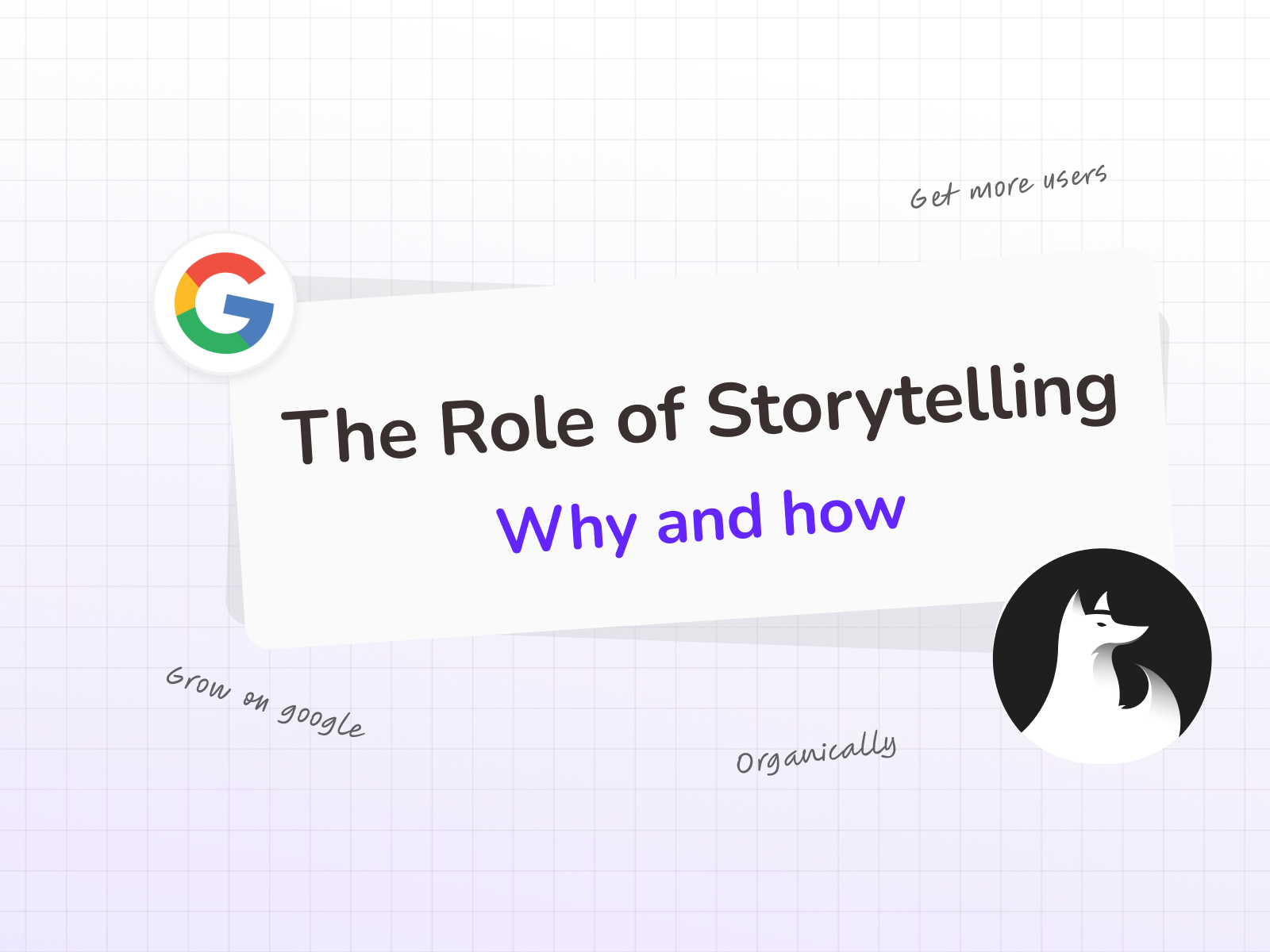Ever found yourself completely engrossed in a blog post, utterly losing track of your surroundings? Chances are, it wasn't just raw data. It was a story.
Our world is absolutely swamped these days. Grabbing someone's attention is harder or, just different. Typical blog posts, the ones that just churn out information, often fall flat. Sure, they might inform you.
But do they ever truly inspire?
And that's exactly where storytelling does. It's not just a trick for authors or filmmakers. Storytelling, in fact, is a fundamental strategy for captivating and retaining your blog audience.
It transforms your content into something unforgettable, something people genuinely connect with, and incredibly shareable besides. Let's see into how harnessing the might of a compelling narrative can utterly revolutionize your blog. You'll forge far deeper connections with readers and, in turn, cultivate authentic engagement.
Why Storytelling Resonates with Readers
We humans, it seems, are simply wired for stories. Our brains, you see, process narratives quite differently from plain old data. When you encounter a story, your brain practically lights up. It activates regions associated with emotion, personal experience, and deep understanding. That's precisely why a narrative, skillfully delivered, can resonate so powerfully.
That's why advertisers try to sell you anything today.
They sell you a story. Showing you people happy with their product.
They sell you happiness. Who cares if Apple is 30% faster than Microsoft.
Apple sells you creativity.


First things first, stories cultivate a profound human connection and empathy. When you share a narrative, readers frequently recognize themselves in the characters or circumstances. It establishes a genuine bridge between your words and their personal experiences. This inherent relatability renders your message genuinely personal and profoundly relevant.
For example, instead of merely stating a fact like 'customer loyalty bolsters retention,' try weaving a brief story. Illustrate how a particular customer's dilemma was resolved, and how that truly solidified their trust. Doesn't that make the entire concept far more compelling?
Moving on, narratives significantly bolster memory retention. Pause for a moment, and consider this. What resonates more deeply with you, a dry enumeration of dates and figures, or an enthralling tale?
Studies, in fact, indicate that information presented as a narrative is up to 22 times more readily recalled than isolated facts. This is because stories imbue information with context and meaning. They truly embed it within your cognitive framework. When readers effortlessly recall your content, they're considerably more inclined to return for further engagement.
Furthermore, narratives evoke a potent emotional impact. Facts, of course, appeal to logic. But stories? They engage your emotions, whether it's unbridled joy, gnawing frustration, soaring hope, or even profound triumph.
Such emotional responses forge a far more robust connection between your reader and your content. This makes it profoundly impactful and remarkably memorable. When readers truly feel something, they're significantly more prone to recall it and even take action.
Finally, storytelling excels at distilling complex ideas, rendering them exceptionally accessible. Rather than attempting to elucidate a convoluted concept with a barrage of jargon, you can simply illustrate it through a narrative.
This effectively dismantles barriers to comprehension. It ensures your message genuinely resonates with a much wider audience. For instance, to explain a complex software feature, you might simply depict a user's journey. Show their initial struggle, followed by their triumph utilizing that feature, rather than merely enumerating technical specifications.
The Elements of an Engaging Blog Story

Every truly compelling story, regardless of its length, typically hinges on a handful of core ingredients. Understanding these elements can genuinely help you craft more impactful blog content. No need to pen an epic, mind you. Simply weave these components in with precision.
Characters are, without a doubt, indispensable to any narrative. For your blog post, this could be you personally, perhaps a hypothetical individual embodying your ideal reader, or even an actual customer. Who, exactly, is this story centered on? What are their motivations, or what particular challenges are they confronting?
By solidifying a character, readers can truly empathize. For example, a finance blog might introduce 'Sarah, a first time investor.' This allows readers to readily track her financial explorations.
Next on our list is the Conflict or Challenge. What exactly is the central problem? What formidable obstacle is your character contending with? This effectively builds narrative tension. It prompts your reader to become genuinely invested in witnessing the resolution.

If you're writing about productivity tools, for instance, the central conflict might well be 'that imposing mountain of a daily to do list and those relentless distractions.' That resonates immediately with countless readers, doesn't it?
Immediately following the conflict arrives the Resolution or Solution. So, how is the predicament ultimately remedied? What novel insight or innovative tool assists your character in surmounting their challenge?
This is typically where your blog post's core message or featured product truly excels. To continue with our productivity example, the resolution might involve 'implementing a particular time management technique' or perhaps 'adopting a novel application.'
The Plot or Narrative Arc encompasses the entire journey itself. It guides the reader from the initial state, through the central conflict, and directly to the resolution. It provides essential structure.
Crucially, it keeps your reader utterly captivated, genuinely eager to discover what unfolds next. Even within a concise blog segment, you can construct a mini arc, consider it as 'predicament, contention, remedy, advantage.'
Finally, the Setting simply furnishes everything with context. Precisely where does this narrative transpire? Is it a tangible location, or something more metaphorical?
Perhaps it's a dynamic office, a tranquil home, or even confined to the mind of an overwhelmed entrepreneur. A clearly delineated setting genuinely anchors the narrative. It also renders it significantly more vivid for the reader.
Practical Techniques for Weaving Stories into Your Blog
Listen, integrating storytelling into your blog posts doesn't demand a complete overhaul of your existing style. In fact, you can leverage a variety of techniques to seamlessly embed narratives within your content. This significantly amplifies its appeal and overall efficacy.
Personal Anecdotes offer an exceptionally potent means to infuse authenticity and foster relatability. Recounting your own experiences, the insights you've gained, or even your missteps, can render your content far more human and genuinely trustworthy.
For example, if you're tackling the subject of overcoming writer's block, a brief account of your own struggle and how you ultimately conquered it proves far more compelling than a mere bulleted list of tips.
Customer Testimonials or Case Studies offer tangible proof that your solutions genuinely deliver results. These are, at their core, narratives of transformation. They illustrate how a customer confronted a challenge, subsequently utilized your product or guidance, and ultimately achieved a positive outcome.
A marketing blog, for instance, might feature a compelling case study. It would meticulously detail how a small business significantly enhanced its online sales by implementing a specific strategy. Incorporating data and direct quotes further solidifies the story's credibility.
Hypothetical Scenarios simply invite the reader to envision themselves within a particular situation. Think about phrases such as, "Imagine you're trying to...", or "What if you could...?" These phrases instantly pull readers into the narrative. They encourage them to visualize the situation and feel the emotions associated with it. This technique is excellent for illustrating potential problems or demonstrating the benefits of a solution before diving into the hard facts. For example, in a blog about financial planning, you might start with, "Imagine a retirement where you never have to worry about money. How does that feel?" This sets the stage for discussing investment strategies.
Problem-Solution Narratives are a classic storytelling arc, perfectly suited for blog content. You introduce a common problem your target audience faces. Then you detail the struggle, perhaps sharing a personal experience or a customer's journey. Finally, you present your product, service, or advice as the clear and effective solution. This approach resonates deeply because it directly addresses readers' pain points. It also offers a clear path to resolution. For instance, a tech blog might discuss the frustration of slow internet. Then it can introduce a new router as the ultimate fix, showing how it transforms the user's online experience.
Metaphors and Analogies can explain complex ideas by comparing them to something familiar. They create vivid mental images. They make information more memorable and engaging. Think of explaining SEO by saying it's like "planting seeds for your website to grow," or discussing customer loyalty as "building a strong, unbreakable bridge." These comparisons simplify the message. They also add a layer of creativity that keeps readers interested.
The SEO Power of Storytelling
When you craft compelling stories, you're not just engaging humans, you're also signaling value to search engines. Let's explore how storytelling boosts your SEO.
Improved Engagement Metrics are a huge win for SEO. When people are engrossed in a story, they spend more time on your page. They are less likely to click away quickly. This significantly lowers your bounce rate. Search engines, like Google, see these positive engagement signals. They interpret them as indicators of high-quality, relevant content. This can boost your visibility on search engines. Longer dwell times and lower bounce rates signal that your article is valuable.
Natural Keyword Integration becomes effortless with storytelling. Stories allow you to integrate keywords much more naturally than simply stuffing them into paragraphs. As you describe a character's journey or a problem they faced, relevant terms and phrases fit seamlessly into the narrative flow. This organic keyword placement avoids keyword stuffing penalties. It also makes your content more readable for humans. For instance, if your blog is about "sustainable fashion," a story about someone trying to find eco-friendly clothes will naturally use phrases like "sustainable fabrics," "ethical brands," and "environmentally conscious choices."
Increased Shareability and Backlinks are a natural outcome of great storytelling. People love to share stories. A compelling narrative is far more likely to be shared on social media or linked to by other websites than a dry, factual report. When your SEO-optimized articles resonate emotionally, readers become your advocates. They spread your message. This organic sharing leads to valuable backlinks. Backlinks are a crucial ranking factor for driving organic traffic. They tell search engines that your content is authoritative and trustworthy.
How FeedPal Elevates Your Storytelling Content Strategy
Crafting engaging stories takes time and effort. As an AI writer assistant, FeedPal helps streamline this process. It lets you focus on the creative aspects of storytelling. Imagine having a tool that helps you brainstorm story angles. It can even generate initial drafts for your blog content. This frees you to refine the narrative and add those personal touches.
FeedPal assists in structuring your articles with clear headings and logical flow. This is essential for good storytelling. It helps readers follow your narrative arc. Our platform also provides insights for SEO-optimized articles. It ensures your stories are not just captivating but also discoverable. We help you choose the right keywords. We make sure your content is structured for maximum visibility on search engines.
With FeedPal, you can go "from idea to published SEO-optimized articles that drive organic traffic in 1 click." This means you can spend less time on the mechanics of writing and publishing. You can dedicate more energy to developing compelling narratives. Our integrated scheduling features ensure your story-driven content is released consistently. Consistency is key for building and retaining an audience.

Do you have a mobile app? Our API and plugin allow you to seamlessly display your newly created, story-rich articles directly within your app. This is a fantastic way to re-engage your current mobile app users with fresh, valuable content. It turns your app into a dynamic content hub. It reinforces your brand's message through powerful narratives.
Conclusion
Storytelling is not just a creative thing. It's a strategic imperative for any blog aiming to captivate and keep its audience. You can make your blog content more memorable, shareable, and impactful. We've seen how incorporating characters, conflict, resolution, and a clear plot can transform your writing. We also explored practical techniques like personal anecdotes, customer stories, hypothetical scenarios, and metaphors. These elements make your articles shine. They also offer significant SEO advantages, boosting engagement and driving organic traffic.
Let FeedPal be your guide.
